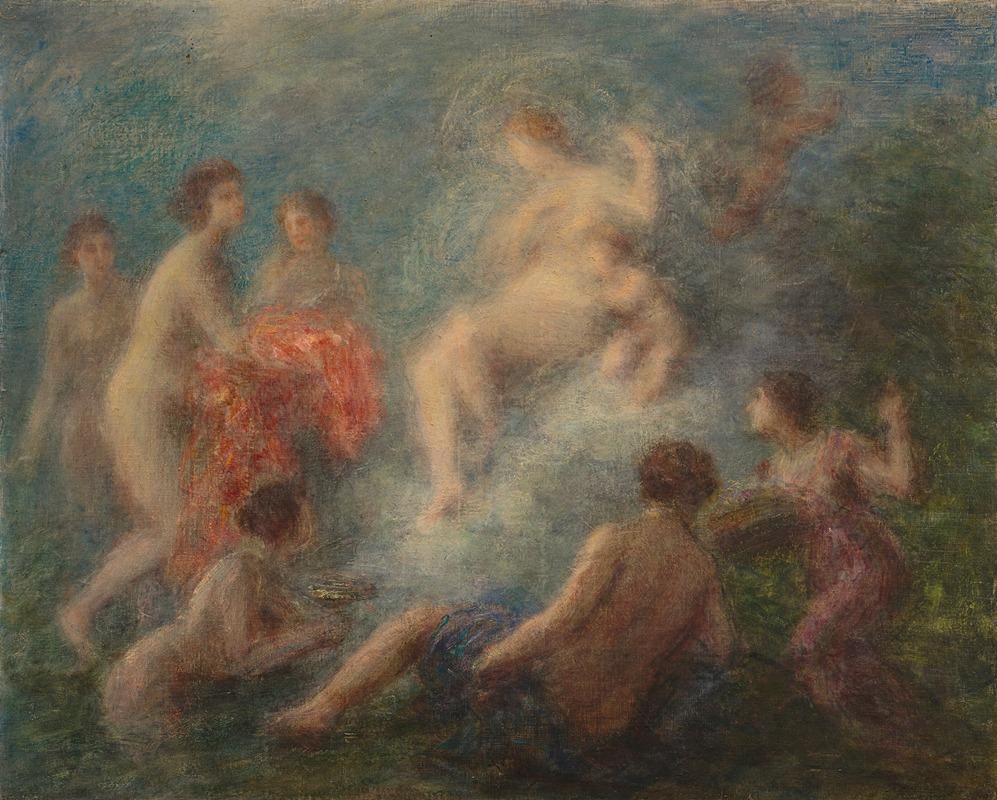
Toilette de Vénus
A hand-painted replica of Henri Fantin-Latour’s masterpiece Toilette de Vénus, meticulously crafted by professional artists to capture the true essence of the original. Each piece is created with museum-quality canvas and rare mineral pigments, carefully painted by experienced artists with delicate brushstrokes and rich, layered colors to perfectly recreate the texture of the original artwork. Unlike machine-printed reproductions, this hand-painted version brings the painting to life, infused with the artist’s emotions and skill in every stroke. Whether for personal collection or home decoration, it instantly elevates the artistic atmosphere of any space.
Henri Fantin-Latour was a French painter and lithographer, renowned for his exquisite still lifes and group portraits of Parisian artists and writers. Among his diverse body of work, "Toilette de Vénus" stands out as a notable example of his exploration of mythological themes, although detailed information about this specific painting is limited.
Fantin-Latour was born on January 14, 1836, in Grenoble, France, and he moved to Paris with his family in 1841. He studied at the École des Beaux-Arts and honed his skills by copying the works of old masters at the Louvre. His early exposure to the art world and his classical training significantly influenced his artistic style, which combined realism with a delicate touch.
Throughout his career, Fantin-Latour was associated with the Symbolist movement, although he maintained a unique style that often defied strict categorization. He was known for his meticulous attention to detail and his ability to capture the subtleties of light and texture, qualities that are evident in his still lifes and portraits.
The theme of Venus, the Roman goddess of love and beauty, has been a popular subject in Western art for centuries. Artists have often depicted Venus in various states of undress, emphasizing her role as a symbol of beauty and sensuality. While specific details about "Toilette de Vénus" by Fantin-Latour are scarce, it is likely that the painting reflects these traditional themes, showcasing the artist's skill in rendering the human form with grace and sensitivity.
Fantin-Latour's work was well-received during his lifetime, and he exhibited regularly at the Salon in Paris. Despite his association with many avant-garde artists of his time, including the Impressionists, he maintained a more conservative approach to painting. His dedication to traditional techniques and subjects earned him both critical acclaim and commercial success.
In addition to his paintings, Fantin-Latour was also a prolific lithographer. His lithographic works often explored themes of music and mythology, further demonstrating his interest in the interplay between visual art and other cultural expressions. This interest in mythology is likely reflected in "Toilette de Vénus," as it aligns with his broader artistic interests.
Henri Fantin-Latour passed away on August 25, 1904, in Buré, France. His legacy endures through his contributions to both painting and lithography, and his works continue to be celebrated for their technical excellence and emotional depth. While "Toilette de Vénus" may not be as widely recognized as some of his other pieces, it remains an integral part of his oeuvre, illustrating his fascination with classical themes and his mastery of the human form.
Overall, while specific information about "Toilette de Vénus" is limited, it is clear that the painting fits within the broader context of Fantin-Latour's work, reflecting his interest in mythology and his commitment to traditional artistic techniques. His ability to blend realism with a poetic sensibility has secured his place as a significant figure in 19th-century French art.


















